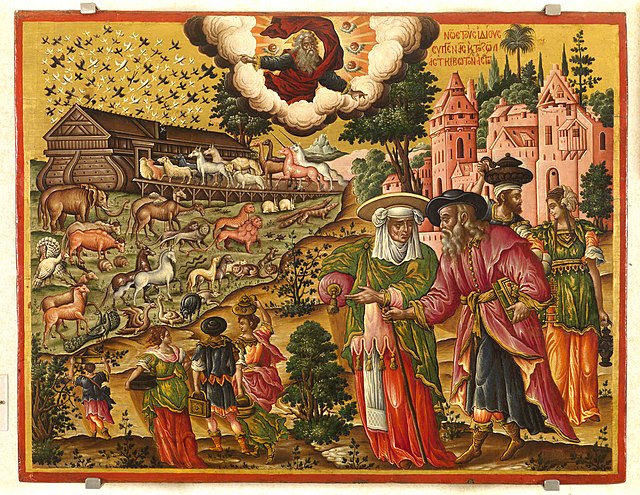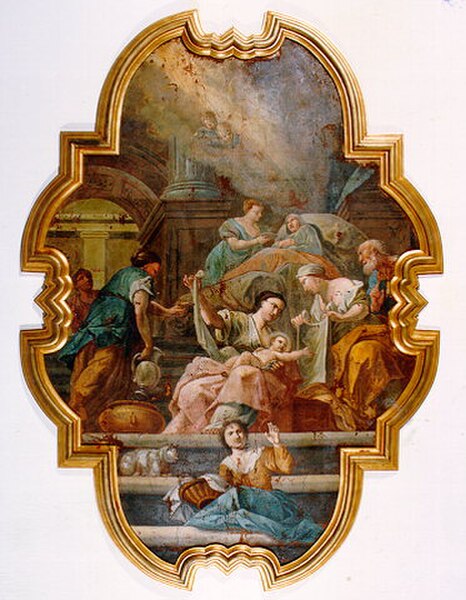Modern Greek art is art from the period between the emergence of the new independent Greek state and the 20th century.
As Mainland Greece was under Ottoman rule for all four centuries, it was not a part of the Renaissance and artistic movements that followed in Western Europe. However, Greek islands such as Crete, and the Ionian islands in particular were for large periods under Venetian or other European powers' rule and thus were able to better assimilate the radical artistic changes that were occurring in Europe during the 14th-18th century.
Athena column by Leonidas Drosis in front of the Academy of Athens (modern).
Georgios Jakobides, Children's Concert.
Lady knitting by Périclès Pantazis.
Glory by Dimitris Mytaras.
Heptanese school (painting)
The Heptanese school of painting succeeded the Cretan school as the leading school of Greek post-Byzantine painting after Crete fell to the Ottomans in 1669. Like the Cretan school, it combined Byzantine traditions with an increasing Western European artistic influence and also saw the first significant depiction of secular subjects. The school was based in the Ionian Islands, which were not part of Ottoman Greece, from the middle of the 17th century until the middle of the 19th century. The center of Greek art migrated urgently to the Ionian islands but countless Greek artists were influenced by the school including the ones living throughout the Greek communities in the Ottoman Empire and elsewhere in the world.
Liturgy of St Spyridon by Panagiotis Doxaras, Byzantine museum, Athens
Noah's Ark (Poulakis)
The Fall of Man (Poulakis)
Birth of Virgin Mary by Nikolaos Doxaras.








